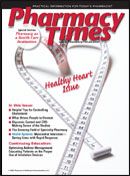Publication
Article
Pharmacy Times
Commentary: Specialty Pharmaceuticals: An Introduction
Author(s):
The first in a new series of regular commentaries on the fast-growing field of specialty pharmacy.
Pharmacy Times is pleased to introducethe first in a series of regular commentariesregarding the state of the field of specialtypharmacy. Many pharmaceuticals in thiscategory provide sophisticated treatmentfor patients with complicated illnesses,such as multiple sclerosis and rheumatoidarthritis. Although the cost of these drugsis high, this sector of pharmacy is seeingtremendous growth. Pharmacy Times willcontinue to bring you regular updates inthis field—the following is the first in theseries from Russel Allinson of Therigy, LLC,the health care industry's trusted source forinformation, resources, and advisory serviceson specialty pharmaceutical and highcosttherapies.


Russel Allinson,RPh, MS
Mr. Allinson is chiefexecutive officer/chiefclinical officer ofTherigy, LLC.
Specialty pharmacy today representsthe fastest growing segmentof pharmacy spending and is oneof the fastest growing segments in allof medical costs. The spending growthfor specialty drugs accounted for nearly25% of the total growth in drug spendingin 2006, making it the largest categorydriving drug spending. Specialty pharmaceuticalsspending in 2008 is estimated tobe $85 billion, according to IMS Health.Total spending in 2010 is estimated tobe $100 billion—representing a growthof nearly 18% over the next 2 years. Thisgrowth is fueled by the increased useof existing therapy for more patients,expansion of indications for existingproducts, and of course a robust pipeline.The specialty pipeline is estimatedto have 600 products in trials.
The origin of specialty pharmaceuticalscan be traced to 3 different events. Thefirst was enactment of the Orphan DrugAct of 1983 to encourage pharmaceuticalmanufacturers to investigate therapiesthat would treat conditions that affectedsmaller groups of patients (<200,000). Thelaw offers a drug developer certain financialbenefits and incentives in exchangefor researching, developing, and getting adrug approved for a rare disease or condition.Since 1983, over 325 orphan drugshave been approved by the FDA.
Secondly, advances in biologic technologiesfostered the creation of specialtyproducts. No longer were drugdiscovery and production limited tochemical processes; advances in biologicprocesses enabled the developmentof drugs produced by biotechnology.Lastly, the development of geneticcoding technology, discernment of thehuman genome, and an understandingof the genetic basis of disease, inconjunction with the aforementionedevents, propelled the rapid developmentof biotech medications.
Although no specific criteria exist todefine a specialty product, the followingattributes are agreed as belongingto the class:
- Expense. As a general rule, specialtytherapy costs between $20,000 and$25,000 per year but may range upto $250,000 or more.
- The product is used to treat a chroniccondition (with a few exceptions);patients treated with specialty productsmay expect to be on a lifetimeof therapy.
- Because the products are oftenmade up of large molecules, theyare susceptible to degradation bythe gut and, therefore, are mostoften administered via a subcutaneousor intramuscular injection or anintravenous infusion.
- Billing. In the past, because thesedrugs were often administered inthe physician's office, the physicianbilled the drug to the patient's medicalbenefit with an administrationfee. This practice resulted in theseproducts having a very cumbersomereimbursement process, which fewcommunity pharmacies had theknowledge or desire to follow. Thisattribute alone may have been thereason initially that specialty productsmigrated to specialty pharmaciesthat had the systems, processes,and knowledgeable staff to managethis complex reimbursement system.
- Special handling, dosing, and patientsupport requirements.
Given these attributes, it is easy tounderstand how these products migratedto pharmacies with the financial resourcesand the technical and professionalexperience to manage them successfully.Specialty pharmacy has oftenbeen compared with medicine, wherea specialization "an inch wide and amile deep" develops quickly. Two earlyexamples in the 1990s were Accredo andStadtlanders, who grew multimillion-dollarbusinesses based on 1 or 2 therapies.
As knowledge of specialty pharmaciesgrew, manufacturers with new specialtyproducts sought them out as ideal pharmaciesto launch their new products,further reinforcing the concept and addingto their reputation. Discussion ofthese new products will be a subject offuture articles.







